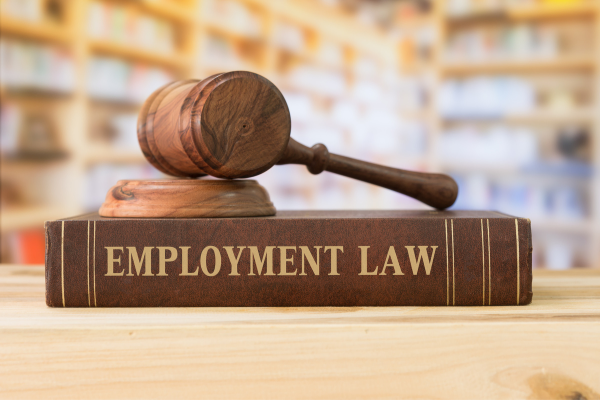Employment Law: Your Rights as an Employee (2023)


You have legal protections for some rights as an employee. These rights guarantee that you receive fair treatment at work and that your company complies with all laws and guidelines put out by the government. The many categories of employment laws that exist and your rights as an employee will be covered in this article.
Contents
Fundamentals of Employment Law
Employer-employee interactions are governed by a body of laws and rules known as employment law. These Employment Laws shield employees from unjust treatment, prejudice, and harassment at work. The Fair Labour Standards Act (FLSA), Title VII of the Civil Rights Act of 1964, the Americans with Disabilities Act (ADA), and the Age Discrimination in Employment Law Act (ADEA) are some of the most significant employment legislation.
The FLSA, or Fair Labour Standards Act
For the majority of commercial and public sector businesses, the FLSA is a federal law that sets minimum wages, overtime compensation, recordkeeping, and child labor regulations. According to the FLSA, companies must pay staff at least the federal minimum wage and one and a half times their usual rate of pay for any overtime that extends above 40 hours in a week.
The Civil Rights Act of 1964’s Title VII
Employment Law discrimination on the grounds of race, color, religion, sex, or national origin is illegal under Title VII. Every private business, every state and municipal government, and every educational institution that employs 15 people or more are subject to this regulation.
The ADA protects people with disabilities.
The ADA forbids discrimination against people with disabilities in all spheres of public life, including employment Law, education, transportation, and all openly accessible public and private locations. Unless doing so would put an excessive burden on the employer, employers must make reasonable accommodations for workers with disabilities.
ADEA: Age Discrimination in Employment
The ADEA forbids discrimination in the workplace against those who are 40 years of age or older. Employers who have 20 or more employees are subject to this law.
Employment Contracts and Agreements
An employment contract is what?
A legally enforceable contract between an employer and an employee is known as an employment law contract. The contract describes the terms and conditions of employment, including the position’s responsibilities, pay, benefits, and duration.
Types of Employment Law Contracts
At-will employment, fixed-term agreements, and implicit agreements are just a few of the several kinds of employment contracts. If the employment relationship is at-will, either party may end it at any time and for any reason, provided that it is not motivated by discrimination or retaliation. On the other hand, fixed-term agreements provide a specified time frame for employment and bind both parties to them until that time. Implied contracts are agreements between parties that are indicated by actions or behavior but are not expressly stated in writing or verbally.
What should be included in an Employment Contract?
An employment contract should include essential details to ensure clarity and protect the rights of both the employer and the employee. Some key elements that should be included are:
- Job title and description: Clearly define the position and the responsibilities associated with it.
- Compensation and benefits: Outline the salary, bonuses, commissions, health insurance, retirement plans, and any other benefits provided.
- Work schedule: Specify the regular working hours, breaks, and any flexibility or overtime expectations.
- Leave and time-off policies: Include provisions for vacation, sick leave, maternity/paternity leave, and other types of time off.
- Termination conditions: Define the grounds for termination, notice period, and severance arrangements.
- Non-disclosure and non-compete agreements: Protect confidential information and restrict the employee from working for competitors after leaving the organization.
- Dispute resolution: Specify the process for resolving conflicts, whether through mediation, arbitration, or legal action.
Discrimination in the Workplace
Types of Discrimination
Discrimination in the workplace can take various forms, and it is essential to be aware of them to protect your rights. Some common types of workplace discrimination include:
- Age discrimination: Treating employees unfairly based on their age, typically targeting older individuals.
- Gender discrimination: Treating individuals differently based on their gender or sex, including issues like pay inequity or promotion bias.
- Racial discrimination: Unfair treatment based on race, ethnicity, or skin color.
- Disability discrimination: Discriminating against individuals with disabilities, including failure to provide reasonable accommodations.
- Religious discrimination: Treat employees differently due to their religious beliefs or practices.
- Sexual orientation discrimination: Discrimination based on an individual’s sexual orientation or gender identity.
- Pregnancy discrimination: Treating pregnant employees unfavorably or denying them job opportunities.
- National origin discrimination: Treating individuals differently based on their country of origin or nationality.
How to File a Claim for Discrimination
It is critical to act if you think you have experienced job discrimination. The first step is to become familiar with your company’s anti-discrimination rules and adhere to the established reporting processes. This can entail making a complaint to the relevant authorities or human resources division.
Read More: Legal Ethics: What Every Lawyer Should Know (2023)
You can submit a discrimination complaint to the appropriate government agency, such as the Equal Employment Law Opportunity Commission (EEOC) in the United States if internal methods are unsuccessful in resolving the issue. They will look into your complaint and, if necessary, file a lawsuit against the employer.
Harassment in the Workplace
Types of Harassment
Workplace harassment refers to unwelcome behavior that creates an intimidating, hostile, or offensive work environment. It is important to recognize the different types of harassment to protect yourself and your rights. Common forms of harassment include:
- Sexual harassment: Unwanted sexual advances, requests for sexual favors, or any other verbal, nonverbal, or physical conduct of a sexual nature.
- Verbal harassment: Insults, derogatory comments, or offensive language targeting an individual’s race, gender, religion, or other protected characteristics.
- Bullying: Persistent and abusive behavior, including threats, humiliation, or intimidation.
- Cyber harassment: Harassment through electronic communication channels, such as emails, social media, or messaging platforms.
How to File a Harassment Claim
If you experience harassment in the workplace, it is important to take appropriate steps to address the situation. Here’s what you can do:
- Document incidents: Keep a record of the date, time, location, and details of each incident of harassment. Include any witnesses, if applicable.
- Review company policies: Familiarize yourself with your company’s policies on harassment and reporting procedures.
- Report the harassment: Notify your supervisor, human resources department, or another designated authority within your organization about the harassment you have experienced. Provide them with documented evidence.
- Seek external assistance: If your employer does not adequately address the issue or if the harassment continues, you may need to involve external entities. Contact the appropriate government agency, such as the EEOC, or consult with an employment attorney for guidance on filing a formal complaint.
- Cooperate with investigations: If an investigation is initiated, cooperate fully by providing all necessary information and participating in interviews or hearings.
Employee Compensation
Read More: Breaking Down Criminal Law: An Overview (2023)
How does workers’ compensation work?
When an employee is injured on the job or becomes ill, workers’ compensation insurance covers medical expenses and lost wages. It is intended to safeguard both workers and employers by offering financial assistance for healthcare costs, missed pay, and rehabilitation.
For whom is Workers’ Compensation Available?
The majority of employees are qualified for workers’ compensation coverage, however specific jurisdictional criteria may differ. Full-time, part-time, and temporary workers are often all covered. Self-employed people and independent contractors often are not eligible for workers’ compensation payments.
Conclusion
To ensure fair treatment at work, it is crucial to be aware of your rights as an employee. Protection from discrimination, harassment, and unfair practices is provided by employment legislation. You can exercise your rights and take legal action if required by becoming aware of these laws and adhering to the correct processes. Keep in mind to get particular advice from relevant government organizations or legal specialists depending on your jurisdiction.
FAQs
Can my employer fire me without giving me a good reason?
Employers often have the right to fire at-will workers without giving a reason. They are unable to do so, nonetheless, for anti-discriminatory or retaliatory motives.
What should I do if I encounter prejudice at work?
Record incidences, internalize the prejudice, and, if required, submit a formal complaint to the relevant government body.
What benefits fall within the purview of workers’ compensation?
Medical costs, lost income, disability benefits, and rehabilitation services resulting from work-related diseases or injuries are often covered by workers’ compensation.
How long is the FMLA leave period?
For approved reasons, eligible employees are permitted to take up to 12 weeks of unpaid, job-protected FMLA absence within any 12-month period.
Where can I get additional details regarding labor laws?
For more detailed information, you can refer to sources like governmental websites, legal publications, or the counsel of employment law attorneys.




2 Comments